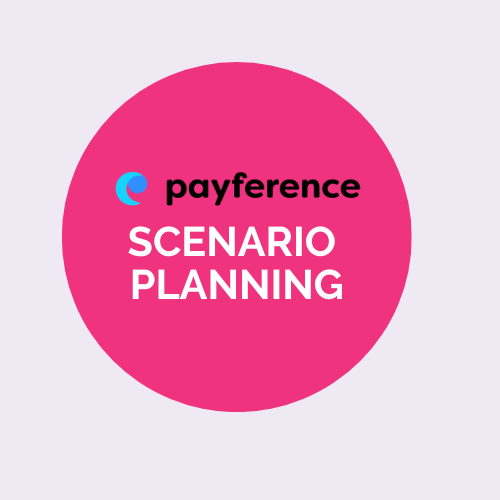Cash Flow Forecasting Tools: How to Leverage Predictive Insights
In an increasingly tight economy, the ability to accurately predict cash flow is more important...
By: Payference on Oct 2, 2023 4:09:32 PM

In the ever-evolving world of finance, making informed decisions is paramount to success. Financial markets are influenced by a multitude of factors, including economic conditions, geopolitical events, technological advancements and more. As a result, financial professionals often find themselves navigating uncertain terrain. To mitigate risks and make well-informed choices, scenario planning has emerged as a critical tool in financial decision-making.
Scenario planning is a strategic tool used to prepare for an array of possible future situations. In the realm of finance, it involves creating a set of scenarios or potential futures that could impact a company's financial health or investment decisions. These scenarios are typically based on a range of variables, such as economic growth rates, interest rates, inflation, and industry-specific factors.
The primary objective of scenario planning in financial decision-making is not to predict the future with absolute certainty, but rather to provide a structured approach for assessing and responding to various potential outcomes. By considering a range of scenarios, organizations can better position themselves to adapt and thrive in an unpredictable environment.
Scenario planning typically involves the following steps:
1. Identifying Key Drivers2. Developing Scenarios
Based on these key drivers, multiple scenarios are developed. These scenarios should encompass a broad spectrum of possibilities, from optimistic to pessimistic. For instance, in the context of a company's financial performance, scenarios could range from robust economic growth to recession.
3. Quantifying Impact
Each scenario is then quantified in terms of its potential impact on financial metrics, such as revenue, expenses, profit margins, and cash flow. Financial models and analysis are employed to estimate these impacts.
4. Assessing Risk Tolerance
Organizations must assess their risk tolerance for each scenario. This involves considering how much risk they are willing to take in each situation and setting specific risk management strategies accordingly.
5. Decision-Making and Strategy Formation
Armed with a deeper understanding of potential outcomes, financial professionals can make more informed decisions and formulate strategies. These strategies may include adjusting investment portfolios, hedging against specific risks, or altering business plans.
6. Continuous Monitoring and Adjustment
Scenario planning is not a one-time exercise. It requires continuous monitoring of the external environment and periodic reassessment of scenarios. As circumstances change, financial professionals must adapt their strategies accordingly.
The use of scenario planning in financial decision-making offers several significant advantages:
Scenario planning is a versatile tool with various applications in the financial sector:
While scenario planning offers numerous benefits, it is not without its challenges and limitations:
In an era marked by uncertainty and rapid change, scenario planning has become an indispensable tool in financial decision-making. It empowers organizations to prepare for a wide range of potential futures, assess risks, and make informed choices. While it is not a crystal ball for predicting the future, scenario planning provides the clarity and flexibility needed to navigate the complex landscape of finance successfully. As financial markets continue to evolve, the role of scenario planning in decision-making is likely to become even more prominent, helping organizations build resilience and thrive in an ever-changing world.
Payference is the preferred cash management tool for mid-market businesses that want to transform with finance operations. If you have questions about how Payference can help with scenario planning or if you’re curious to see how we can increase your efficiency, accuracy and collections, set up a short demo.
In an increasingly tight economy, the ability to accurately predict cash flow is more important...
In a world marked by financial volatility and economic uncertainties, the importance of a...
Effective cash management is vital for businesses to maintain a healthy financial position and...